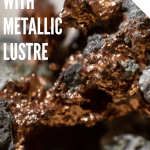Not all that glitters is gold. Indeed, quite a few minerals out there have a tell-tale, metallic luster. Looking more like polished metal than stone at first glance, these minerals are common with collectors and some are even essential parts of various industries. Not all of them are metals in the first place, although the majority are ores or simple metallic compounds.
So, let’s take a look at 9 different minerals with metallic lusters, and see if you can spot the similarities.
Minerals With Metallic Luster
1. Galena
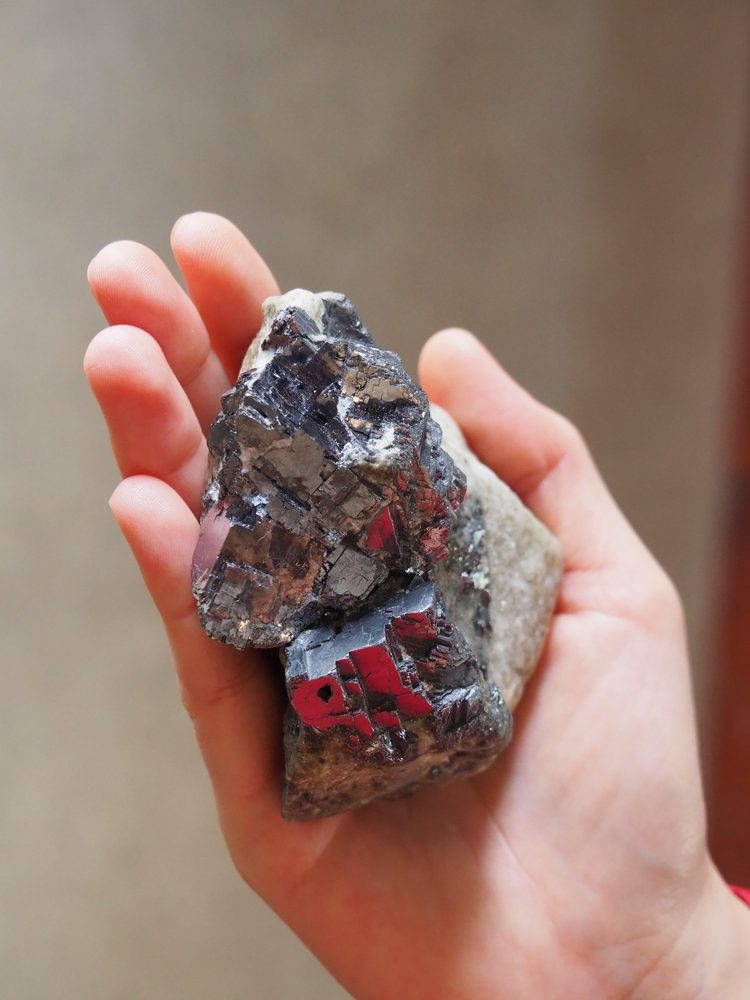
Galena is a primary ore of lead. specifically, it’s lead sulfide. Long used for both it’s cosmetic properties and as a base for the dull metal, it’s got a long history alongside humanity. Surprisingly, it first seems to have been used to help deter the sun from people’s eyes in the Middle East, before the toxic properties of lead were properly accounted for.
Galena is mainly seen as cubic or octahedral crystals with a deep grey color. Good surfaces show a tell-tale metallic luster, shining and showing reflections in a way that most stones simply don’t. Some galena is argentiferous as well, meaning that it contains silver. In areas with argentiferous galena, it’s a considerable source of silver. Argentiferous galena is actually one of the best sources of silver currently available.
Galena is found in many places, basically anywhere that hydrothermal activity previously took place. Across the United States, it can be found in various quantities but the biggest deposits are in Kansas, Missouri, and Wisconsin. It’s a great mineral for collectors, with a unique history, just make sure you wash your hands after handling it to avoid lead exposure!
2. Iron Pyrite

Iron pyrite is commonly known as Fool’s Gold for the brassy color and metallic luster it presents. Iron pyrite is actually a form of iron sulfide, one of the two main varieties found. It forms into cubic crystals, but it’s also found scattered in various rocks where it presents as small, metallic glimmers. It was the bane of new prospectors during the Gold Rush since it could easily be mistaken for native gold and it often occurred in the same areas.
Iron pyrite has a secret hidden in its matrix: in areas where it occurs alongside gold, it also traps nanoparticles of gold. A bit ironic, considering how much pyrite has been casually disposed of over the years as nothing but a nuisance in the search for precious metals. While separating it is still an intellectual task, the fact that it can contain up to 0.25% gold by weight makes it an important future ore of gold. While it sounds low, that’s much richer than many of the ores which miners currently scour the earth for, gold mining is no joke.
Iron pyrite is found across the United States, but it’s mainly concentrated in New England. In this area, there are different, unique forms. More importantly, it’s an easy find. Pyrite crystals are regularly pulled from the bedrock and road cuts in the region, and it generally occurs alongside other interesting minerals as well.
3. Native Copper
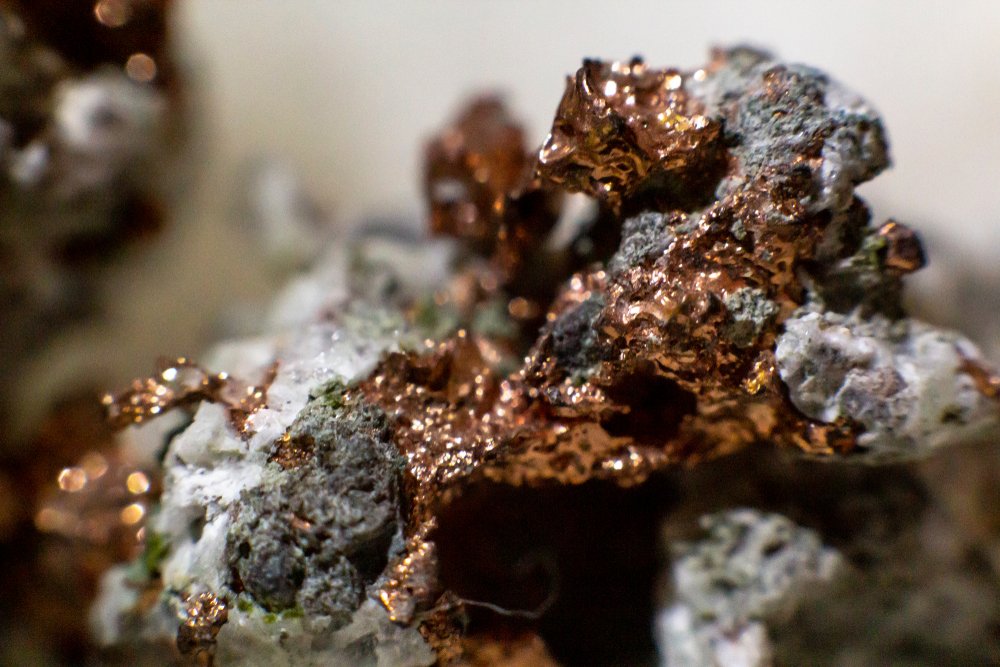
Copper is an incredibly important metal for our civilization. While it’s mostly found in electrical wires and piping in our current age, it was among the first metals to be worked by humanity. Copper is simple to work, and it was often found in large quantities in its native form. From there all you need is a campfire and something to hammer with to make workable tools, although you’ll need a kiln if you plan to cast it.
Native copper occurs in a few different forms. The main type you’ll see is copper nuggets, small pieces of copper which have formed into a rounded shape. In other cases, you can also see copper dendrites, tree-shaped formations where the copper has crystallized into sharp, angular shapes. Both are more desirable in their native form these days, collectors will pay a pretty penny for them and the majority of copper in circulation is derived from ore or recycled.
Native copper occurs in many areas around the world, but the main one of importance in the USA is in Michigan. Here native copper is found on a regular basis, from small nuggets to larger formations of basalt that contain rounded copper nodules. It’s been mined from ancient times, and it’s just one more testament to the vast geological diversity of the Great Lakes region.
4. Pyrrhotite
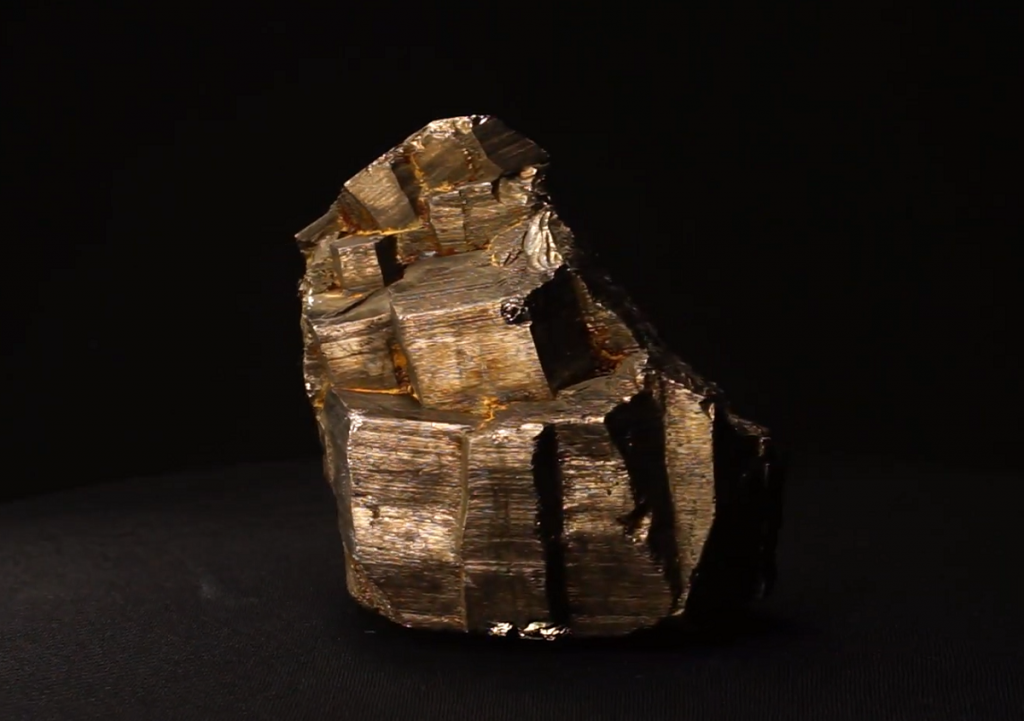
Pyrrhotite is a strange mineral, but it’s essentially another iron sulfide. The difficulty in describing it is in the fact that it’s non-stoichiometric, which means that the base mineral structure isn’t able to be defined with smaller numbers. It’s sometimes called magnetic pyrite, as the crystalline form is weakly magnetic in some cases.
Pyrrhotite is similar to iron pyrite in its coloration but generally forms into tabular crystals. Unlike the cubic system that Fool’s Gold is known for, instead, it takes on the form of larger monoclinic crystals. While superficially similar to pyrite, it’s easy to tell apart if you’re familiar with both of the minerals since there’s very little similarity in their ordered structure.
This mineral is of special interest to government bodies like the USGS. It turns out that its occurrence in concrete can cause structural failure over time. The mineral reacts with water easily and breaks down quickly once moisture is let in. This has made it a source of crumbling basements and it’s also something that the government makes sure to keep track of.
5. Bornite
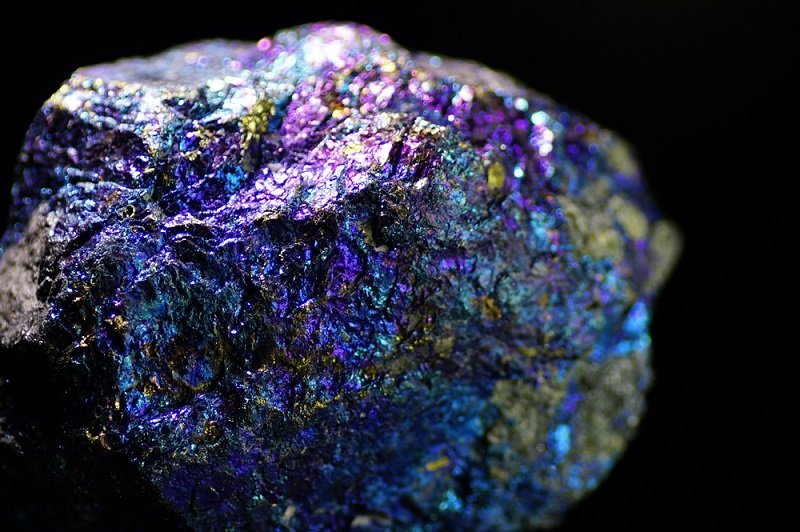
Bornite is sometimes called peacock ore, a name also used for the mineral chalcopyrite below. The mineral itself is a copper iron sulfide, with an orthorhombic crystal system. While fresh surfaces are generally coppery, bornite quickly oxidizes and takes on a variety of deep red, blue, green, and purple when exposed to air. It’s a common find in areas where copper is mined.
Bornite is primarily known for its tarnishing, giving it the name of peacock ore. The mineral naturally begins to oxidize in this way, there’s no need for anything to kickstart the process. Its occurrence isn’t tied to any one sort of location, instead, it’s found in everything from mafic igneous rocks to pegmatites to skarns.
The most notable place where it’s been collected in the US is in Connecticut, near Bristol. It’s also found in sizable quantities in the copper deposits around Butte, Montana. When “fresh” the copper skin displays a metallic luster, and often specimens are kept this way. That said, many people prefer the tarnished look, which is iridescent and hard to resist.
6. Chalcopyrite
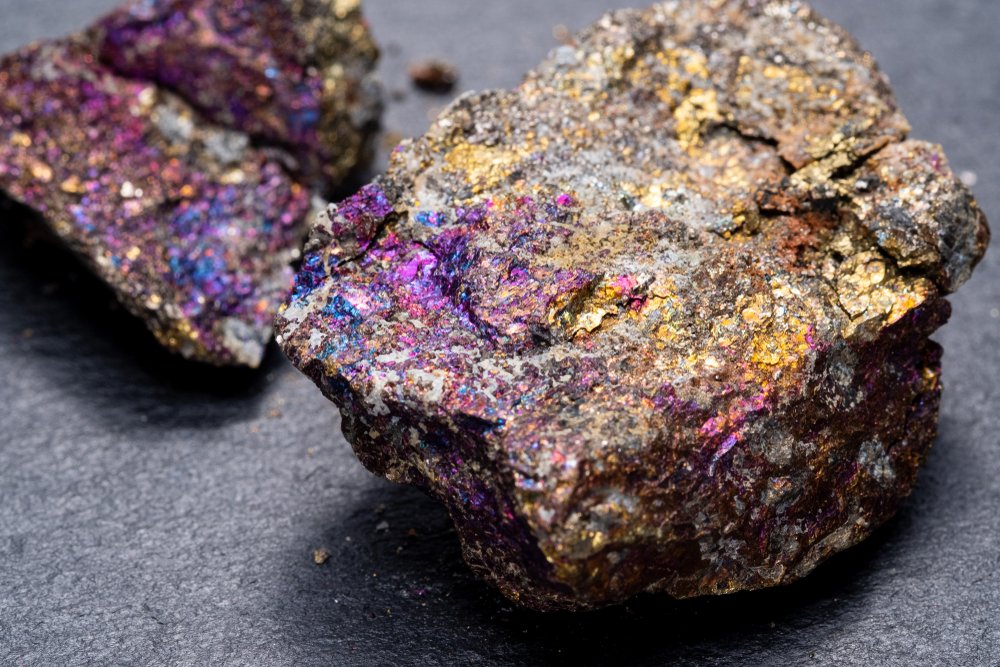
Chalcopyrite is another form of copper iron sulfide, this time with a brassy look. It’s sometimes sold as “Peacock Ore” since brief immersion in a weak acid like vinegar will cause the copper to tarnish with spectacular colors. It’s considered the most common of the various copper ores that humanity uses.
Chalcopyrite can be distinguished in its crystalline form from iron pyrite and pyrrhotite by its crystal system. The tetragonal crystal habit is easy to recognize, especially when you’ve seen samples side by side with the other sulfide minerals. In its natural form, it resembles crystalline brass. It can also be distinguished by its softness compared to iron pyrite and its distinctive streak during testing. In the latter case, it’s black with green flecks.
Chalcopyrite is found in many localities across the planet, which is why it’s the most heavily used copper ore. In the USA the primary deposits are in New England, where it’s often found alongside iron pyrite and other sulfide minerals. If you’re rockhounding in that region you’d do well to spend some time learning the difference between chalcopyrite and iron pyrite, especially since smaller concentrations can make it quite hard to determine.
7. Hematite
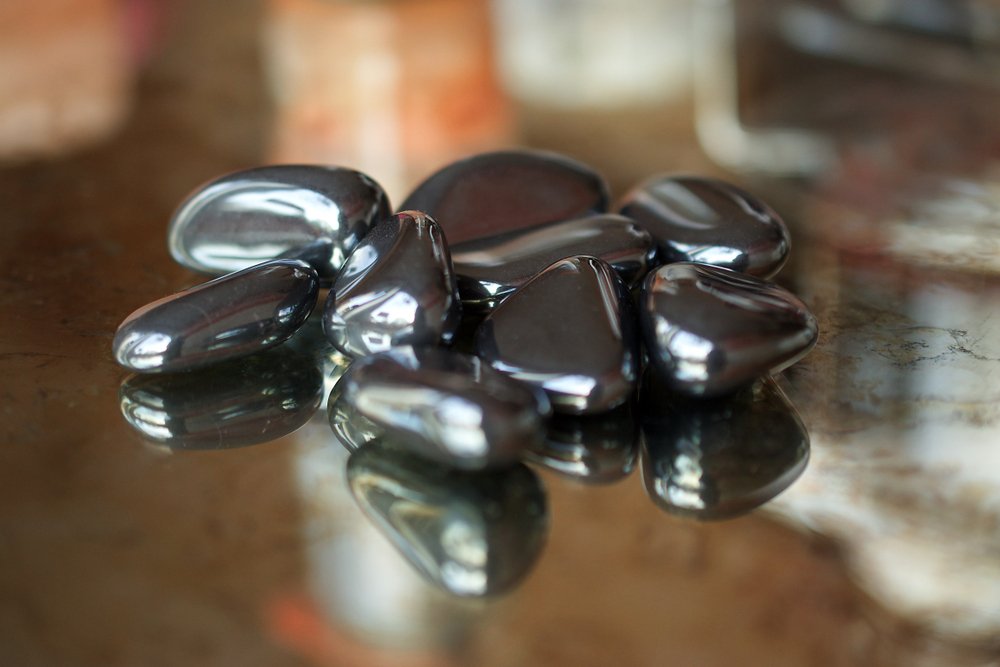
Hematite is a black, metallic iron oxide. It’s one of the main ores of iron, remaining magnetic and it’s quite widespread. For collectors it’s often seen in many different forms, the glistening black makes it distinct and massive formations lend themselves to cutting shapes and odd beads out of the material without regard for saving the extra. It can also be found as a red mineral in certain configurations.
While not the glistening black that hematite is typically associated with, hematite is an important part of banded iron formations. The stones from these formations are typically striped red and black. Pieces are often sold as “Tiger Iron” and the formations are very important for those studying the geological history of the earth. Other formations are botyroidal, comprised of “bubbles” of the metallic black stone, or even crystalline. All are collected for both beauty and their iron content.
Hematite is so common that it’s almost impressive, with literally thousands of locations known across the United States that house it. This varies from large, metallic grey rocks to small bits of it in the soil but it’s almost everywhere. It’s also a common mineral to find included in other crystals, including spotted red quartz which is sometimes called “strawberry quartz.”
8. Magnetite

Magnetite is another of the main ores of iron, and it’s often hard to distinguish from hematite since they share a similar crystal structure. It’s the most magnetic naturally occurring material due to its high iron content, and it’s used to this day in the production of iron and steel. In the distant past, it was often used as a primitive compass, and its presence is used in a variety of ways to measure the electromagnetic field of our planet.
Magnetite is one of the few minerals that we know living organisms can synthesize. Biological analysis has even shown it in nearly all parts of the human brain! Oddly, magnetite is also one of the few minerals which we find as a replacement in fossils. These fossils, known as magnetofossils, appear to be the result of biomineralization rather than migration of other sources of magnetite.
While not as common as hematite, there are plenty of magnetites to go around. Rockhounds are generally looking for unique formations, such as the cubic crystals sometimes found in San Benito County in California. Whether it’s as a beautiful, glossy specimen or instead as a chunk of ancient history, it’s remained a favorite of collectors since time immemorial.
9. Native Gold
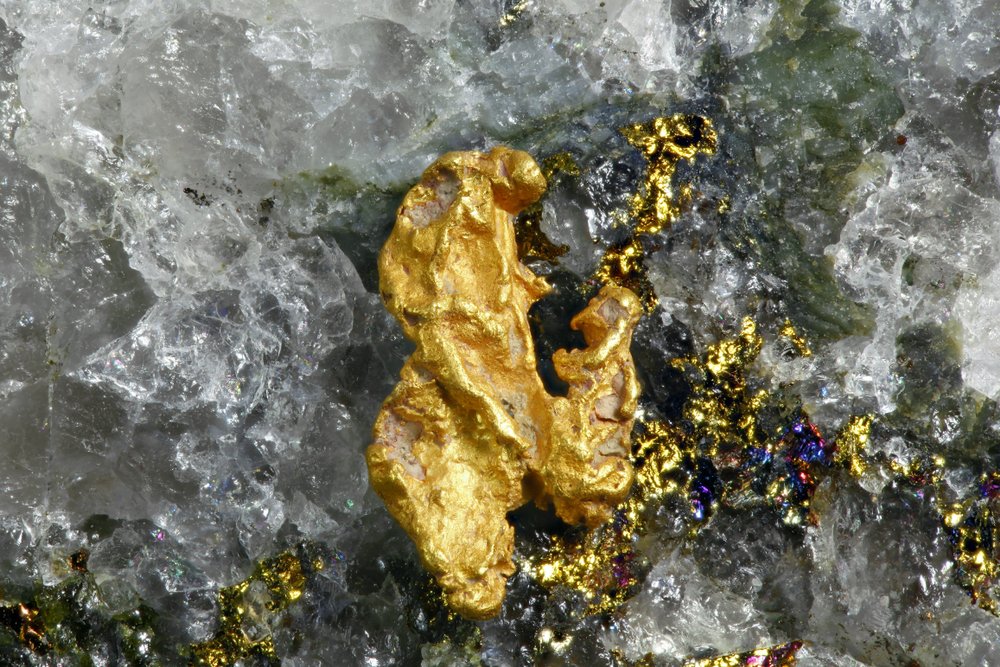
Of course, some of what glitters is gold. Native gold is one of the most important elements of human development. The lack of oxidation and ease with which it could be shaped made it an easy store of value, and to this day you can see artifacts made from gold that looks the same as the day they were finished. Gold has been responsible for huge migrations, wars, trade, and just about everything else humans did up until the advent of fiat currency.
Not all native gold is equal, of course. The highest quality gold is generally found in Australia, where concentrations in excess of 98% gold can be found. Native gold is often comprised of large percentages of gold with various impurities, usually other metals such as lead, silver, or copper depending on the deposit. In the end, it really boils down to the location and source of the gold itself.
In the United States, there have been several gold rushes. These days a lot of the material is pulled from Alaska, but hobbyist prospectors are still in luck. Anywhere downstream from a gold deposit is sure to have alluvial gold deposits that one can pan for. Some of the best lie in the American River in California, the Black Hills in South Dakota, and various tributaries of the Colorado River in the West.
- Online rock and mineral club for collectors of all levels!
- Find community with like-minded rock and mineral enthusiasts.
- Monthly Giveaways!
- Free Access to Entire Digital Library of Products (annual memberships)

